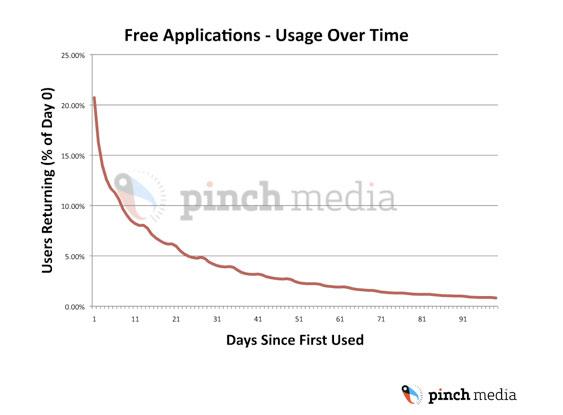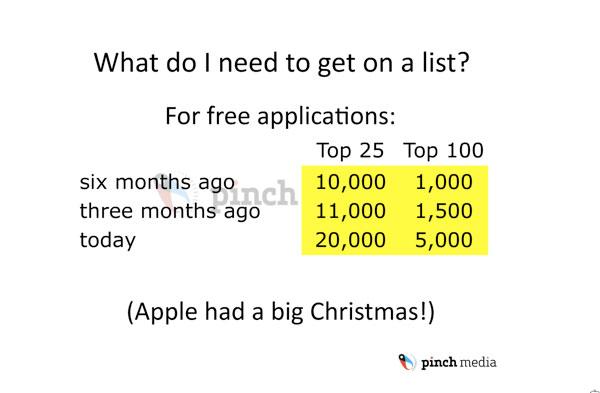Average iPhone app usage declines rapidly after first download
The vast majority of apps downloaded from the App Store are in use by less than 5% of users after one month has passed since the download, according to an analytics firm that is also shedding light on other aspects of the business.
Just 20% of users even return to run a free application again the day after it's downloaded. As time goes on, that decline continues, eventually settling below five percent at the one month elapsed mark and nearing zero after three months.
Paid applications showed a similar decrease, indicating that developers have just a short time to capture the user's attention.
Yardley also took on a question developers often face: whether to charge for an app or use a free, ad-supported model. He noted that paid apps are used slightly more than free ones and for slightly longer periods. In his findings, very few apps can succeed with ad support. The number of views just isn't there.
Assuming free apps are run a dozen times by each user, and that those free apps are run about 6.6 times more often in total than paid apps, Yardley showed that "the typical application would have to bombard its users with ads to beat the money it'd make from paid sales."
Specifically, the average free app would need to earn $8.75 CPM (an advertising term that means cost per thousand) in order to equal revenues that paid apps receive on average, but the market is currently standing in a range of 50 cents to two dollars CPM. Thus, Yardley concludes, only a few high-performing applications, representing less than 5% of the market, can maximize earnings with advertising.
"In other words, unless there's something inherent about the app that screams free, sell it," he said.
Category matters, too: games are used for longer periods than any other genre. Pinch Media found the long-term audience for the average app is just 1% of the total number of downloads. Sports apps retain users a little better over the short term, and entertainment offerings retain best over the long term.
Finally, the company estimates a free app needs 5,000 downloads in a 24-hour period to make the App Store's Top 100 list or 20,000 in the same period to place on the Top 25. Compared to six months ago, when there were fewer competitors, the threshold needed for the Top 25 has doubled. Meanwhile, the Top 100 minimum barrier for entry has increased by a whopping five times.
Pinch Media's analytics have also helped identify some of Apple's next-generation iPhone prototypes, which have represented themselves as "iPhone 2,1" in website visit logs.
 Zach Spear
Zach Spear












 Malcolm Owen
Malcolm Owen
 William Gallagher and Mike Wuerthele
William Gallagher and Mike Wuerthele
 Christine McKee
Christine McKee
 William Gallagher
William Gallagher

 Marko Zivkovic
Marko Zivkovic









